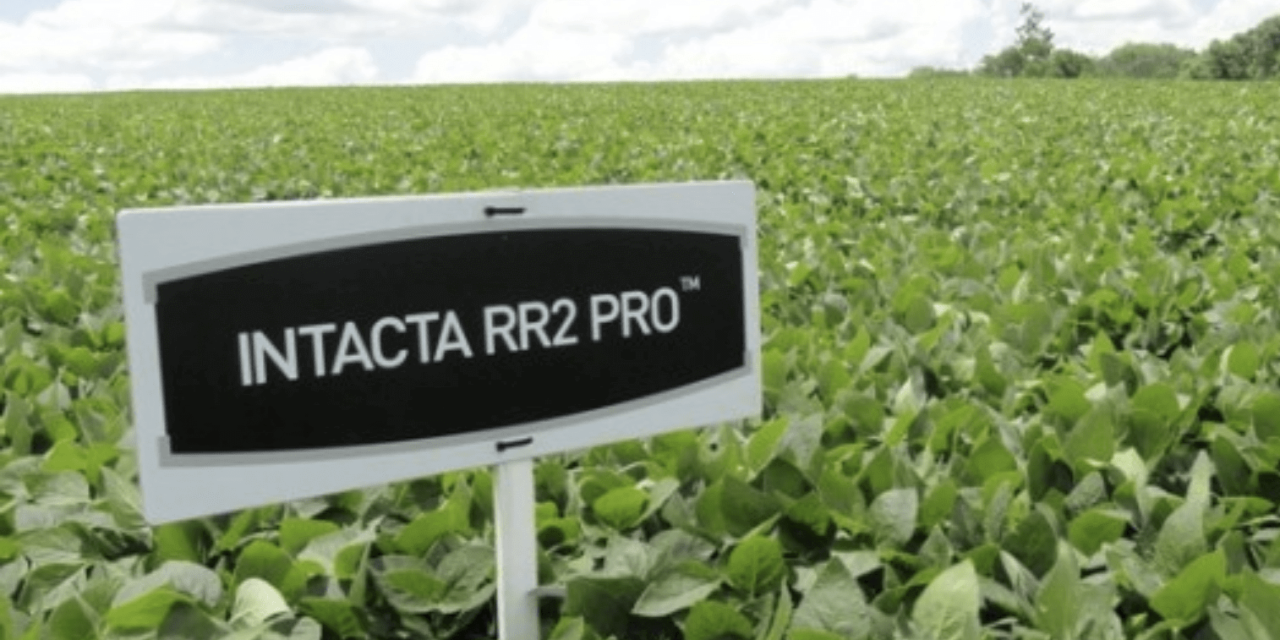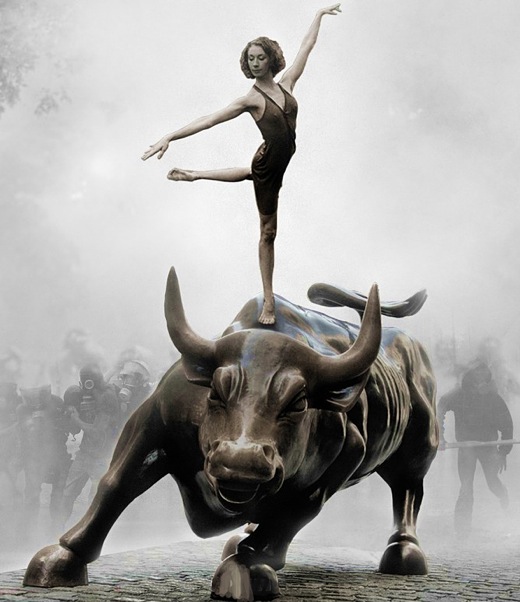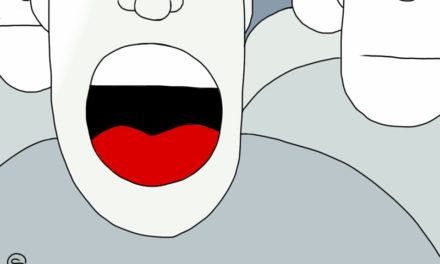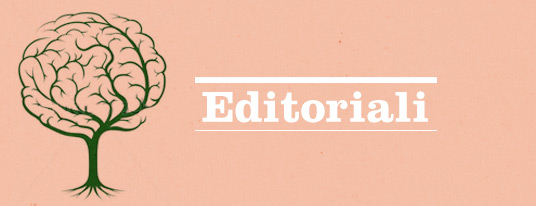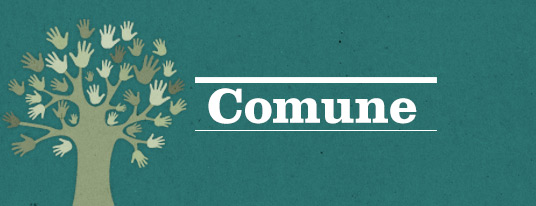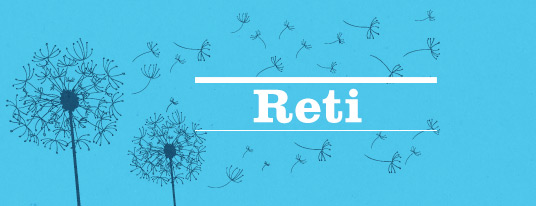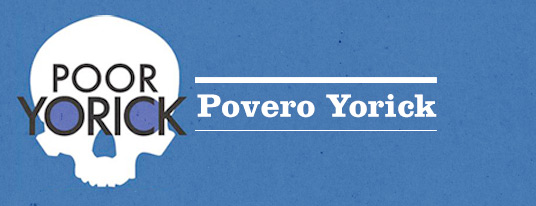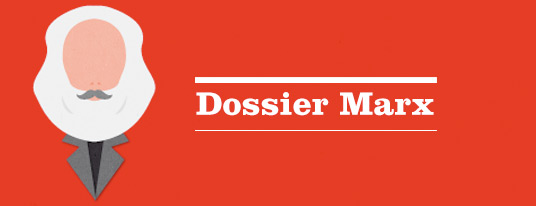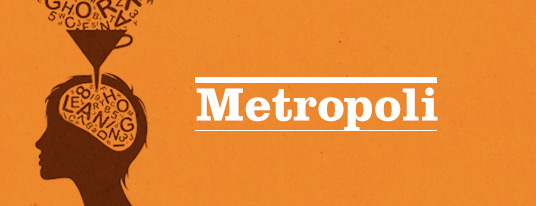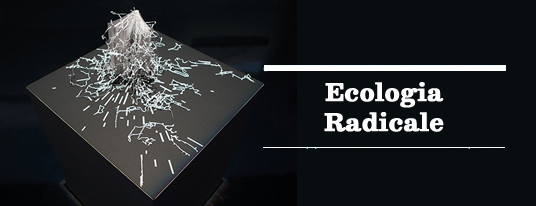Pubblichiamo qui l’Introduzione di The Politics of Operations di Sandro Mezzadra e Brett Neilson, disponibile in pdf qui. La scheda del libro, pubblicato da Duke University Press, è disponibile qui.
Di SANDRO MEZZADRA e BRETT NEILSON.
Imagine you are traveling by bus across the Argentinean pampas. You are absent-minded, reading a book without really paying attention to it. Looking out of the window, you see a giant billboard with the words “Intacta RR2 Pro” emblazoned across it. Beneath this product name runs a slogan: “Desafiar los limites en soja” (Challenging the limits of soy). Gazing into the distance, you see only the green of soybean fields extending to the horizon. You do a quick search on your phone to discover that Intacta RR2 Pro is a product of Monsanto, part of a new generation of transgenic seeds expanding “into even more marginal areas” (Cáceres 2014). Suddenly, you feel a sense of disorientation. What can marginal mean, you ask, in such a uniform and nondescript landscape? Reading on, you realize that, of course, there are marginal areas in the pampas, as there are elsewhere in the Latin American countryside and other parts of the world. You continue to search and read and you come to learn — if you did not already know — that the extensive cultivation of soy, enabled by seeds such as Intacta RR2 Pro, has a violent and disruptive effect on established social as well as spatial arrangements, prompting dispossession and expulsion of peasant and often Indigenous populations. You recall the passage from the Grundrisse in which Marx (1973, 408) discusses capital’s “tendency to create the world market” by making “every limit” appear “as a barrier to be overcome.” And as your thoughts roll on, you contemplate the multifarious operations needed before a capitalist actor such as Monsanto can extract value and foster its accumulation process in an area like the pampas: genetic manipulation, testing, prospecting, advertising, selling, relying on the police or goons to do the dirty job of expulsion and dispossession, and so on. You think of the living labor involved in and disrupted by these operations, and perhaps you resolve to engage and learn more about people’s resistance to their deployment. Finally, you ponder how the concatenation of these operations links with mutations of the world market—with China’s rise as an economic power, for instance.
This banal story provides a point of entry into several of the topics that we discuss in the following chapters. Crucial to our engagement here are the notions of operation and politics of operations. But what is an operation? And do operations have politics? If so, what are the implications of these politics for the continued entrenchment of capitalism across diverse scales and spaces, for existing institutional and political architectures, and for struggles that contest and seek to reverse these same processes of entrenchment? These are among the primary questions we take up in The Politics of Operations, a book that picks up on, but by no means confines its attention to, the infectious rhetoric of big data and algorithms that has gripped capitalist discourses and practices over the past half-decade. Expanding our understanding of operations beyond this field to encompass a wide variety of processes both historical and contemporary, we set out to investigate the operative dimensions of capital and capitalism, charting their political significance and examining their relevance for a politics that seeks to operate within, against, and beyond capital.
The Politics of Operations examines how particular operations of capital “hit the ground” not simply to furnish an analysis of their local or wider effects but also to supply an analytical prism through which to investigate how their meshing, and conflicting, with other operations of capital remake the world. We imagine this as a means of excavating contemporary capitalism, which means surveying and tracing the history and present expansion of capital’s operations to unearth and expose some of the most important tendencies shaping current processes of capitalist transition and upheaval. The book is deliberately global in scope, dealing with examples from a range of planetary settings and exploring resonances between them to work constantly between theoretical and empirical perspectives. Although we draw on our own research experiences, we do not imagine the book as a report on these engagements. Rather, we let these experiences give impetus to our inquiry even beyond the explicit discussion of some of them we offer in the following chapters. Our case studies are more wide-ranging than these experiences have allowed and include developments in port logistics, mineral extraction, data mining, and the penetration of finance into “popular” and subaltern economies in many parts of the world. In each of these instances, our inquiry focuses not only on the underlying rationalities and operations of capital at work but also on struggles and contestations that emerge from the deep implication of these logics in specific material and social circumstances. At this juncture, some of the most important tensions between the diversifying and homogenizing aspects of contemporary capitalism become evident. By addressing our investigations to this juncture, we seek not to offer a comparative analysis of different manifestations of these tensions, identified according to the established geographies of the world map, but to discern and follow resonances among trends and processes that traverse multiple boundaries, temporalities, and scales.
The role of spatial and scalar arrangements in contributing to this variegation is far from passive. In this regard, there is a need to specify the meaning of the conceptual image we deployed earlier and will use quite a lot in the following chapters—that is, the image of capital “hitting the ground.” This image might be taken to imply a kind of Promethean lightning strike that violently destroys and rearranges existing spatial and social realities. We certainly do not want to disavow the force of this basic implication of the phrase. However, a more careful unpacking of what we seek to grasp through the use and elaboration of this image reveals attentiveness to the qualities of the ground. It is important to explain that we use the word “ground” in a sense that is at once material and prospectively constructed as an operative surface on which capital intervenes. While ground is neither merely terrain nor land, it registers the specificity of spatial, social, legal, and political formations with which capital must grapple as it becomes enmeshed in dense constellations of flesh and earth. It should be very clear that we do not think such an operative surface is a smooth ground, since the registration of tensions, frictions, and differences along capital’s frontiers is a constant element of our analysis. We understand space at large as a field of tensions and struggles, where established spatial formations are far from passive with respect to operations of capital, while those operations often have a disruptive effect on the production of space. Capital operates across places, territory, and scales, deploying a logic that is ultimately planetary but must continuously come to terms with resistances, frictions, and interruptions that crisscross the expansion of its frontiers and geographies.
The Politics of Operations draws its material inspiration primarily from an investigation of the entanglement of three prevalent areas of contemporary economic (and, we would hasten to add, political) activity: extraction, logistics, and finance. Although there is convenience in approaching these activities as distinct “sectors” of the global economy, this is a nomenclature we tend to avoid or undercut, as it does not sufficiently capture the ways in which each of these three areas in recent years has provided conceptual orientations and empirical grids for the analysis of contemporary capitalism. We thus steer clear of understanding extraction, logistics, and finance merely as economic sectors or taking them as paradigmatic for an analysis of capitalist operations, as tends to happen, for instance, in Latin American debates concerning extractivism (see Gago and Mezzadra 2017a; Mezzadra and Neilson 2017). Instead, we treat extraction, logistics, and finance as intersecting sets of operations and practices that provide different points of entry or relative framings for a wider analysis of the mutating fields of politics and capital. By working through and across these overlapping and mutually implicated operative domains, The Politics of Operations forges a framework that aims to exhibit the distinctive rationality and logics of contemporary capitalism. Departing from literal understandings of extraction as the plundering of natural resources, we work toward an expanded definition that allows us to explore how some of the most prominent and forceful operations of capital today rely on material practices of prospecting and extraction. We find this to be the case even in highly abstract fields of capitalist endeavor, such as finance, whose operations are frequently attributed an almost metaphysical quality and too often analyzed in isolation. The notion of extraction writ large thus features centrally in our efforts to discern the logics of contemporary capitalism, providing a way to describe how operations of capital interact with and draw on their multiple outsides. Such an understanding of extraction also provides a background against which we investigate transformations of the state and the composition of global struggles, particularly in the wake of the Occupy movement, the Arab rebellions, and other important contestations that flared up and seemingly dissipated in the early years of the present decade.
Although we provide a full definition and genealogy for the concept of operations in chapter 2, it is worth briefly dwelling on the notion at this stage since it provides the underpinning for our approach to capital and capitalism. Despite its etymological origins in the Latin opus and historical elaboration in fields as diverse as the military, mathematics, and philosophy—where it has often been associated with the category of work as opposed to labor, as, for instance, in the writings of Hannah Arendt (1998)—the concept of operations is often considered too straightforward to warrant serious investigation. To give an example, discussions of community (Nancy 1991) and politics (Agamben 2014) have been advanced on the basis of the concept of inoperativity, without deep consideration of what an operation itself might be or do (which is surely necessary if we are to ask what it means to be inoperative). Too often, the operation is reduced to a device of “techno-economical organization” (Nancy 1991, 23), as if it were a simple relation of cause and effect, or input and output. Such a perspective overlooks what the operation itself does, reducing the complex interactions of space and time that occur between its seeming moments of cause and effect, input and output, to linear processes, and leaving no scope for understanding how these interactions relate to arrangements of space and time external to the operation. For instance, if we understand the workings of a financial algorithm as an operation in this limited sense, we are likely to ask questions about its relevance for market dynamics, ignoring the complexity of its technical functioning as well as its dependence on and contribution to wider transformations of capitalism.
With regard to this last example, it is worth noting that this more restricted understanding of operation is a feature not only of philosophical theories that explore notions of community and politics but also of recent celebrations of predictive data analytics and algorithms based in electronic information processing systems. For us, the operation is never merely technical. Its workings, while providing a way to open discussion around contemporary capitalism, also offer a means of analyzing past entanglements of politics and capital, as becomes evident in our engagement with the history of the chartered company in chapter 3. The important point to grasp is that an operation can be equated neither with activity nor potentiality; however, in providing a conceptual ground that allows us to think these two dimensions together, it offers a powerful conceptual and practical way to interrogate the workings of capital. Once such a ground is in place, we can begin to ask questions about capital’s interactions with different kinds of social, legal, and political institutions; its effects on natural environments; and the political possibilities for its contestation and overcoming.
This reading of operations of capital holds important implications for our attempt to pick up and reframe in the book two important Marxian concepts: Gesamtkapital and exploitation. Marx amply uses the notion of Gesamtkapital (as well as gesellschaftliches Gesamtkapital), particularly in volumes 2 and 3 of Capital, which were notably left unfinished (a fact that should invite further creative work in the critique of political economy). This concept assists Marx in grasping the general configuration and logic of movement of capital. For reasons that will become clear in chapter 2, we prefer to translate Gesamtkapital as “aggregate capital” rather than as “total capital,” which is more common in English. While Marx never really provided a full-fledged theory of aggregate capital, we are convinced that elaborating on this concept can be particularly productive for understanding the peculiar ways in which capital constitutes itself as an actor, and even as a political actor understood as an aggregation of forces.
The investigation of the relations, tensions, and conflicts among “individual capitals” (which Marx also terms “fractions” of aggregate capital) always figured prominently in Marxist debates—in particular about the state, but also about the relation between capital and capitalism. Cutting through these debates, we attempt to map the political and spatial constitution of contemporary global capitalism, which we consider to be caught in a tumultuous and risky transition that is taking it beyond established arrangements of territorialism and capitalism. To put it succinctly, we are convinced that the crucially important historical moment of national and industrial capitalism is over. In that moment, the mediation of the nationstate (its always contradictory and never fully accomplished attempt to perform the representation of national aggregate capital) played an essential role—to put it in the words of Henri Lefebvre (2009, 226)—in attempting to “control flows and stocks by ensuring their coordination” within the world market. In the present conjuncture, extractive operations such as those we analyze in the cases of logistics and finance dominate the composition of aggregate capital and tend to command and submit other operations of capital to their logics—including industrial ones, which continue not only to exist but also to expand at the global level. Extractive operations of capital have to come to terms with nation-states, although their spatial scope and working logics are by no means contained by national borders.
While we stress the relevance of the concept of aggregate capital, we never forget—and this may be the main reason that we are cautious about translating Gesamtkapital as total capital—that “capital is not a thing, but a social relation between persons which is mediated through things” (Marx 1977, 932). The analysis of the current mutations of this social relation— which also means of the composition of capital’s main “other,” living labor, to take a category that Marx particularly develops in the Grundrisse—is one of the main stakes of The Politics of Operations. Mapping those mutations also implies for us carefully analyzing the ways in which they are inscribed in and produce space, making the geography of contemporary capitalism far more complex than suggested by such binaries as global North and global South or center and periphery. Moreover, our investigation of the expanding “frontiers of capital” leads us to return to Rosa Luxemburg’s The Accumulation of Capital (1913 [2003]) and to propose a new reading of her emphasis on capital’s structural need for an “outside” for its operations.
Once this outside is conceptually reframed in nonliteral and nonexclusively territorial terms, as we try to do in chapter 2, it becomes possible to single out a specific set of operations of capital that aim to open up and occupy new spaces and temporalities for valorization and accumulation. We thus join a debate on the relation of capital with its multiple outsides that has been particularly lively in recent years—involving, for instance, Marxist geographers such as David Harvey (2003), postcolonial critics of political economy such as Kalyan Sanyal (2007), and feminists such as Nancy Fraser (2014) and J. K. Gibson-Graham (2006). What distinguishes our approach within this important debate is our emphasis on the need to rethink the second Marxian concept we mentioned earlier: exploitation. Working through the difference but also the important relations between exploitation, on the one hand, and dispossession, power, domination, and alienation, on the other, we try to rescue this crucial notion from the “economistic” reading that has long prevailed in Marxism. As we show in chapter 5, the need to stress the political nature of exploitation becomes clear once the concept is plunged into the dense material relations that surround the production of subjectivity. Once the relation between exploitation and subjectivity comes into view, raising issues of embodiment as well as social difference, the very possibility of considering questions such as race and gender as secondary with respect to some primary contradiction of capital and labor simply vanishes. The conceptual fabric of The Politics of Operations is therefore crisscrossed by intense dialogues with antiracist and feminist thinkers.
We continue to struggle with the attempt (and need) to give a name to the subject that constitutes the main “other” of contemporary capitalism. We are aware that the notion of exploitation requires further conceptual elaboration and detailed empirical investigation to support such an attempt. As in previous writings, we continue to emphasize heterogeneity as a crucial feature of the composition of contemporary living labor, which is also reflected in the heterogeneity of struggles confronting the operations of capital on the global scale. We cannot but repeat—and we try to substantiate this statement in the chapters that follow—that this heterogeneity is a source of both power and vulnerability. We are still skeptical regarding attempts to identify a single figure as the strategic subject in the struggle against capitalism, whether it is the “cognitive worker” or “surplus populations,” the new working class somewhere in the “global South” or the “precariat.” At the same time, we are convinced that the debates about the affinities and tensions between the concepts of class and multitude offer the most fertile ground on which to discern and produce a political subject adequate to the times. We suggest the continuation of these debates and related investigations within the open field of tension that—again with a reference to Marx—can be thought of as being constituted between the two poles of the “working class” and the “proletariat” (Balibar 1994, 125–49), the former referring to the subject of an “economic” struggle internal to capitalism and the latter naming a political subject whose actions and organization contradict and go beyond this same system (Balibar 1994, 128).
What we emphasize in this book against the background of our analysis of the extractive operations of contemporary capitalism is that social cooperation—even in an “abstract” figure, particularly as far as processes of financialization are concerned—emerges as one of the main productive forces spurring the processes of capital’s valorization and accumulation. The concept of exploitation must be therefore reframed in a way that takes this essential social dimension of capital’s operations into account. We also attempt to shed light—particularly on the basis of an analysis of several social and political struggles in chapter 5—on the huge gaps, tensions, and conflicts between social cooperation and living labor. In so doing, we turn our attention to the multiple hierarchies, fractures, and obstacles that make difficult, to say the least, the political appropriation by living labor of the terms on which social cooperation is organized (to put in terms that evoke a quite accurate definition of communism on the basis of several texts by Marx).
Raising the question of the discord and discrepancies between social cooperation and living labor is our way to formulate a political riddle that engages a huge number of thinkers, activists, and movements in many parts of the world. In the chapters that follow, we engage in several sympathetic and, we hope, constructive conversations with such thinkers and activists. We agree with Lawrence Grossberg (2015, 261) when he writes that “the left needs new forms of cooperation and organization, conversation and dis-agreement, new ways of belonging together in intellectual, political and transformational struggle.” Many parts of this book are written in the spirit of “dissensual conviviality” that Grossberg traces back to the interventions of the Women’s Studies Group at the Center for Contemporary Cultural Studies in Birmingham in the late 1970s. We try to clarify and flesh out our arguments while at the same time deepening and intensifying a common search for a politics capable of effectively confronting contemporary capital’s operations and opening up new vistas of liberation and life beyond the rule of capital.
We share, for instance, several analytical and conceptual points with Saskia Sassen’s book Expulsions (2014) and more generally with her contributions to the understanding of the extractive character of finance. At the same time, we take a critical distance, on the basis of our notion of differential inclusion, from the way in which Sassen builds her analysis on the incorporation-expulsion binary. Likewise, we have learned from Maurizio Lazzarato’s (2012) work on “indebted man” and acknowledge more generally the relevance of debt and indebtedness in the workings of contemporary capitalism. We caution, however, against a kind of absolutization of the logics of debt, which often leads to a downplaying or even denial of the salience of exploitation. To work toward a reframing of the notion of exploitation, which is indeed one of the main theoretical and political stakes of The Politics of Operations, we also critically reconsider the distinction formulated by David Harvey (2003) between “accumulation by dispossession” and “accumulation by exploitation.” In many current debates and struggles—for instance, in the Latin American debates on “neo-extractivism” we analyze in chapter 4, but also in struggles against gentrification in many parts of the world—this distinction has led, even beyond Harvey’s intentions, to an obfuscation of the concept and reality of exploitation.
In our attempt to come to grips with the political riddle concerning the fractious relations between living labor and social cooperation, which basically means to specify the contours and stakes of these relations and indicate possible directions for continuing to work on them, we also take into account current debates on postcapitalism (Mason 2015), including their feminist (Gibson-Graham 2006) and accelerationist (Srnicek and Williams 2015) elaborations. While we find these theoretical efforts and the concrete practices and experiences related to them important and hopeful, we also find questionable, in descriptions and theories surrounding “life after capitalism,” the lack of interest in the problematic that in historical Marxist discussions has been termed the “transition.” The search for noncapitalist modes of organizing life, society, and economy, whether predicated on an investigation of communitarian networks or on the potentialities of technology, cannot skip the question of how to confront capital’s rule and command in the present. Picking up again the question of transition does not mean for us to rehearse the dream of a kind of irenic or paradisiac condition that follows a toppling or decline of capitalism somehow imagined as inevitable or ordained. A communist politics today cannot but take a radical distance from such millenary and chiliastic dreams, which all too often have turned into nightmares. As we explain later in this book, such a politics must radically come to terms with the lessons of history. Nevertheless, we are determined to contribute to the opening up of spaces for the political imagination of horizons of life after capitalism, at the crossroads between a reinvention of liberty and a radicalization of equality. Differently in this regard from theories of postcapitalism, we stress the relevance of this “after” to capitalism, seeking to problematize it and asking what it might mean to imagine forms of organization that can confront, negotiate, and possibly break capital’s rule.
Old questions emerge again here in new clothes. Let us list some of them. What is the relation of democracy to capital and capitalism? Is democracy the exclusive horizon of politics, as post-Marxist theories of radical democracy have seemed to suggest since the 1980s? (For an analysis of this tendency, see, e.g., Mitropoulos and Neilson 2006.) What about the distinction between reform and revolution? What is the shape taken today by such important forms of organization as the party and the trade union? What roles can they play, along with social movements, in a more general anticapitalist politics? What is the position of the state in practical efforts to develop a politics of emancipation and even liberation? From Slavoj Žižek (2013) to Jodi Dean (2012), there is no shortage of political thinkers who emphasize, often employing Lacanian concepts and idioms, the need for a new vanguard party particularly in the wake of the “defeat” of the Occupy movement in the United States. (For a discussion of the topic, see “The Party We Need” 2016.) We do not dismiss the problem of the party—the politicization of “a part,” to recall the phrasing of Dean (2012, 245). But we are very cautious regarding a simple rehabilitation of old party models that takes into consideration neither their historical failures nor the subjective composition of contemporary movements and struggles—which was, for instance, the essential point of departure for Lenin in What Is to Be Done? ([1902] 1978). We think it is more promising to interrogate both the accomplishments and limits of existing parties in countries where the “left” has been able to seize the government (as has occurred in several Latin American countries and for a very short period in Greece) or has at least realistically attempted to do so (as happened with the rise of the Podemos political party in Spain). This is a task we undertake in chapter 6, against the background of a more general analysis of the transformations of state and government in the current conjuncture of global, extractive capitalism. We repeat and substantiate here what we wrote in a previous essay: “The state is not powerful enough to confront contemporary capitalism; in order to reopen politically a perspective of radical transformation, something else, a different source of power, is absolutely necessary” (Mezzadra and Neilson 2014, 787).
Expanding on this statement, we foreshadow at the end of the book a theory of “dual power,” which we combine with an attempt to mobilize a revolutionary geographical imagination to produce and occupy new spaces beyond the boundaries of the nation-state. In so doing, we try to develop what Luxemburg once called a “revolutionary political realism” (quoted in Haug 2009, 12, our translation). We join a number of other thinkers who are starting to reflect anew on the nexus between dual power and transition in the face of the crisis of traditional leftist theories of reform and revolution (most notably, Hardt and Negri 2017; Jameson 2016, 3–8). We stress the need, in specific conjunctures, to negotiate with the state or some of its structures and even to “seize” them. But we insist on the fact that what is needed is a politics that is not centered on the state, a politics that is capable of confronting neoliberalism and the extractive operations of capital at the level of their encroachment in the material fabrics of daily life. We thus enter a dialogue with several interpretations of neoliberalism that stress the need to go beyond its usual rendering in terms of a set of economic theories and policies that could be simply deleted by “seizing the state” (see, e.g., Dardot and Laval 2014; Gago 2017). And we emphatically contend that the alternative to neoliberalism cannot be some kind of return to a more or less mythologized “welfare state” (see also Hall, Massey, and Rustin 2015, 18–19; Walker 2016a), a figure whose conditions, material constitution, and limits we investigate in chapter 3.
We do not know whether our political search can be contained by the concept of democracy. Despite the lively critical debates surrounding “radical democracy,” we have over the past couple of decades—and even more in the wake of the crisis of 2007–2008—witnessed a process of emptying and manipulation of representative democracy, as well as the ascent of new, “post-democratic” (Crouch 2004) forms and techniques of governance. At the same time, democracy maintains a mobilizing power, as became clear, for instance, through the main slogan of the powerful movement of square occupations in Spain in 2011: Democracia real, ya! (Real democracy, now!). This is something one cannot simply dismiss from a kind of superior intellectual point of view. Moreover, debates such as those spurred by the publication of Pierre Rosanvallon’s Counter-Democracy (2008) nurture a notion of “conflictual democracy” (see, e.g., Balibar 2016, 186, 206–7) that is challenging from the angle of a theory of “dual power” as a stable political framework. Even Antonio Negri’s Insurgencies, which we regard as a kind of milestone in this regard, starts with a quite apodictic sentence: “to speak of constituent power is to speak of democracy” (Negri 1999, 1). So although today we cannot easily shrug off an unease regarding the concept, we handle democracy with care. We note that the old and almost forgotten definition of democracy provided by Aristotle in his Politics, where he plainly and simply equates it with rule by the poor, has been taken up again in recent times by several thinkers who share with us the search for a new politics of radical transformation (see, e.g., Brown 2015, 19; Dardot and Laval 2016; Varoufakis 2015). Once this materiality and even partiality (as far as its subject is concerned) of democracy is emphasized, the vexed question of its relation to communism can be resumed under conditions that are completely new, although no less threatening than those under which the discussion of that question was violently and tragically interrupted.
Before describing our work in individual chapters, it may be helpful for readers to gain a sense of how The Politics of Operations relates to our earlier book, Border as Method, or, the Multiplication of Labor (Mezzadra and Neilson 2013a). We do not imagine the present work as a sequel to this earlier text. Notwithstanding the distinct ambitions of The Politics of Operations, we continue to use several of the concepts developed in Border as Method— from “frontiers of capital” to the “multiplication of labor,” to mention just two important examples. Discussions of and engagements with the politics of migration, and the subjective stakes that crisscross it, are also present in the chapters that follow, given the extent to which migratory movements interact with operations of capital and are an increasingly sensitive flashpoint in political contestations today. But readers who approach this book with the expectation that we extend or complicate the analysis of borders and migration offered in Border as Method are likely to be disappointed. The Politics of Operations marks a new departure even as it furthers our interest in the changing spatial and temporal formations of capitalism initiated in the earlier book. There are also important continuities between the books regarding method. Both works take a deliberately wide approach, drawing examples and case studies from a variety of global sites and similarly com bining discussions of our own research experiences with accounts drawn from other sources. While the inclusion of the word “method” in the title of Border as Method registers an attempt to take the perspective of the border as an epistemic angle through which to examine a range of issues relevant to the analysis of contemporary capitalism—and not just those relating to borders and migration—something similar can be said of our approach to operations in this work. Understanding operations as a crucial hinge between capital’s workings in specific spatial and social circumstances and its articulation into wider planetary vistas of capitalism means our investigations are not limited to particular cases in which capital “hits the ground” but range across a number of relevant issues, including the historical role of capital as a political actor, the pains and joys of anticapitalist struggles, and the changing roles of the state. The following summary of our interests in each chapter gives an idea of this breadth of concerns.
—
Chapter 1 provides the background of the analysis pursued in the book. We interrogate the scenarios that emerged after the global financial crisis of 2007–2008, following the multiple mutations and variegations of this crisis and stressing how it has reshaped the capitalist world system. We dwell in particular on the vexed question of the relation between capital and difference, on emerging degrees of combination between neoliberalism and nationalism that shape the current global conjuncture, as well as on the changing status of territory in contemporary economic, political, and legal arrangements. We also begin to flesh out our general argument regarding the extractive nature of contemporary operations of capital.
Chapter 2 asks crucial questions regarding the “unity” of capital and the ways in which it can be considered a political actor. To tackle these questions, we offer a new reading of the Marxian concept of aggregate capital and develop our notion of operations of capital. This notion allows us to revisit the difference between capital and capitalism by means of a discussion of capital’s multiple outsides, a topic that has attracted the attention of several thinkers in recent years. We close the chapter with an analysis of the power of abstraction in contemporary capitalism, which leads us to a more general attempt to reframe the question of capital’s relation to politics.
Chapter 3 continues our discussion of the relation of capital to politics by investigating the time-honored question of the role of the state with respect to capital. Starting from a short review of Marxist debates on this topic, we stress the relevance of colonialism and empire in the history of the modern state. We also suggest that there is a need to go beyond the “Weberian” baseline model against which many claims regarding the crisis and transformations of the state in the global present are assessed. To this end, we provide a historical excursus on the scattered geographies of state and empire, singling out the relevance of such formations as chartered companies, colonial factories, and concessions, whose uncanny mutations resonate in present meldings of capital and the state. The chapter continues with an attempt to develop a typology of figures of the state in the second half of the twentieth century, predicated on distinguishing among the democratic social state, the socialist state, and what we call the developmental state. We conclude the chapter with a genealogical investigation of the origins of neoliberalism and globalization from the angle of developments in Asia, Africa, and Latin America.
Chapter 4 presents our analysis of extraction, logistics, and finance. While we stress the relevance of these “sectors” for contemporary capitalist development and crisis, we also emphasize the need to carefully investigate their multiple overlapping. Inter-referencing some of the most recent trends in extraction, logistics, and finance, the chapter aims to shed light on a set of principles or logics that increasingly play an important role in driving the dynamics of global capitalism and the composition of aggregate capital as a whole. The chapter ends by proposing a widening of the concept of extraction to understand the contemporary operations of capital well beyond the “sectoral” boundaries of extraction, logistics, and finance.
Chapter 5 interrogates the relations between the extractive operations of capital discussed in the previous chapter and the characteristics of emerging social struggles in different parts of the world. We attempt to map diverse landscapes of struggle, from Latin America to Europe, from India to South Africa, from Turkey to China, and from the United States to Nigeria, to set the stage for a conceptual discussion of what seems to us a crucial theoretical and political problem today: the constitutive relation, as well as the tensions and gaps, between social cooperation and living labor. In pursuing this analysis, we discuss such questions as the new formations of labor and life looming beyond the crisis of “free” wage labor as a “standard” employment relation, the condition and struggles of surplus populations, and the enduring relevance of so-called primitive accumulation. In line with our discussion, we focus particularly on the need to reframe the concept of exploitation.
Chapter 6 brings together the multiple analytical and theoretical threads followed in the book and discusses some of their political implications. We contribute to the ongoing discussion of the crisis, transformations, and persistence of the state within capitalist globalization by shifting the ground on which these debates are usually set. Keeping in mind our criticism of the baseline model of the state in chapter 3, we review current discussions of governmentality, governance, states of exception, and sovereignty, as well as the proliferation of labels, prefixes, and adjectives that haunt efforts to describe the global landscape of states. We also try to make sense of the important tasks performed by states in the present while at the same time carefully investigating the limits and pressures exerted by extractive operations of capital on their actions. The chapter ends with a discussion of the role of the state within a politics of emancipation and liberation, taking stock of recent political experiences—most notably, the long decade of “progressive” governments in Latin America since the early 2000s. Briefly put, our conclusion is that although the state or some of its structures can be “occupied” for a politics of transformation, such a reformatted state is not powerful enough to confront contemporary capitalism. A different source of power is necessary, and we close the book by outlining a sketch of a politics that is not centered on the state but capable of combining the establishment of a system of social counter-powers with wider, transnational attempts to seize political spaces or even create new ones. Needless to say, the further development of this theoretical sketch can only be part of collective efforts, where “weapons of criticism” will have to go hand in hand with “criticism by weapons.”

